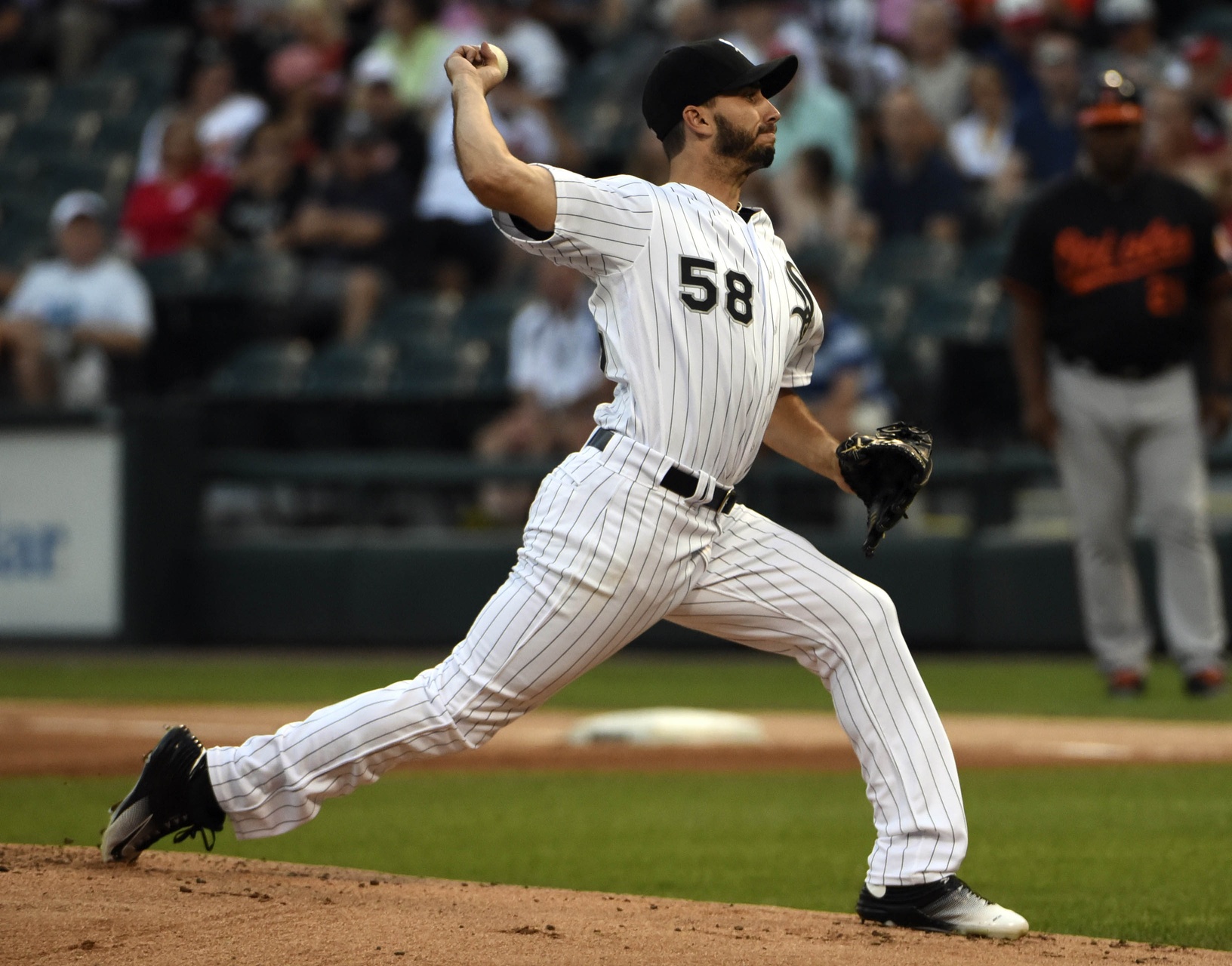It’s been easy to spend the last five years of watching the White Sox obsessed with Chris Sale. The development of a generational, Hall of Fame-caliber player has felt more worth chronicling than an entire team itself, and from this framing, it’s easy to slip into the trap of viewing the fate of the Sox as dependent on whether Sale can throw 220 innings of 2.80 ERA-ball, or just 210 innings of 3.30, when a far more sizable shift can come from a journeyman hurler dropping from league average to unplayable.
We tend to get more blindsided by someone less interesting, like Hector Noesi in 2015 or John Danks in 2016, just falling apart, because we overlooked their underlying decay in the rush to write them off as “fine” and move on. This is an analyst problem, but it doubles as a White Sox problem, since they have regularly been able to stand up to the rest of the league in roster spots 1 through 10, while taking a shellacking in spots 16 through 25.
So here’s a roundabout way of finally getting to Miguel Gonzalez, who began as a Spring Training minor league deal, debuted as a desperate backup option, had some moments of unease early on, and then transitioned into a nice back-end starter groove at the start of July so smoothly that there was barely any thought put into the assumption that he was “fine,” and would be in the back of the rotation going forward.
Gonzalez’s 135 innings of 3.73 ERA was good, but not good enough to draw quibbles that it was belied by a 4.65 DRA and that his 2016 cFIP was a below-average (albeit career-best) 104. Gonzalez even pitched so poorly on June 25 that the Sox managed to lose a game in which they hit seven home runs, but a 2.72 ERA over his last 13 starts appears to have blotted memories and concerns from that day out. And if it hadn’t, a rebuild would have done the trick.
Gonzalez has always boasted more command and confidence and cojones than actual stuff, has never so much as broke 7.0 K/9 in a season, and has never controlled contact in a way that would lead to pleasing metrics or hope for stable performance. He made his living attacking the zone with low-90s heat and dealt with the days where the barrels found everything as they came. Gonzalez’s biggest swing-and-miss offering has always been his splitter, which still left him without a great second offering to throw in the zone. That kind of fringy profile puts him in danger of a collapse if just a slight complication arises, like the late-2015 velocity dip that Cat Garcia noticed, which led immediately to him getting crushed down the stretch and being put on the outs of the Baltimore roster. 1-to-2 mph is enough to place most No. 4 starters into a crisis, and Gonzalez is certainly no exception.
Perhaps that’s why he was more willing than others to accept the approach of his new team as dogma. Don Cooper’s preference to have his guys “stand tall” and remain upright as much as possible through their delivery is well known, and Gonzalez told me early in the season it was a focus in the bullpen sessions. Sure enough, scouts say that was present through his strong close to the year. The delivery tweak allows him to get more torque in his hips, and while the velocity bump is slight (Less than one mph, but more importantly there was no second half fade), it gave him a crispness to his stuff he had lacked and sorely needed, particularly his slider.
Enigmatic for most of his career, Gonzalez’s slider became his primary breaking pitch again in 2016, giving him a bender more suited to his attacking approach and allowing to be more selective with his splitter as a wipeout offering. The fix is a physically sustainable, cleaner motion and Gonzalez is well-conditioned at age 32, but it’s not wholly transformative.
While he’s worked to earn the $5.9 million going into his pockets next season, he’s still right-hander with average velocity, low strikeout rates and unremarkable secondaries, who is a setback away from being a liability. A spike in walk rate early on will signal trouble is afoot with his delivery, and expecting more than another year or two of steady production seems unwise, which is academic since he hits free agency after 2018 anyway.
So, like most players not on their Top Prospects list right now, the Sox should be looking for opportunities to move Gonzalez. Unlike others, there’s no angst about Gonzalez breaking camp with the club, because grit-and-guile No. 4 starters are not something other teams should admit they have to trade for until they are forced. Gonzalez won’t bring back a haul but he should bring back value, and any value is worth the small cost of snatching him up when he had none and revitalizing his career. It won’t be enough of a contribution to put Gonzalez in the annals of franchise history, but during a stretch that has seen the Sox great attraction sent away, seeing a scuffling veteran come into the organization and turn out just “fine,” is a small joy that can no longer be brushed aside.
Lead Image Credit: David Banks // USA Today Sports Images

1 comment on “What is Miguel Gonzalez going forward?”
Comments are closed.